Home » Posts tagged 'larger benthic foraminifera'
Tag Archives: larger benthic foraminifera
The Eocene carbonate platforms of the westernmost Tethys: a review
According to the prevailing view in literature, two Eocene carbonate platform belts developed on northern and southern margins of the Tethys Ocean. However, Eocene platforms in the Malaguide −Ghomaride Units (Betic-Rifian Arc; Spain and Morocco, respectively) in intermediate position to the classic platform belts have been proposed in recent literature. A number of representative Ypresian to Priabonian stratigraphic sections have been revisited and empowered by new data collected for the scope. Ten lithobiofacies (consisting of limestones rich in Larger Benthic Foraminifera (LBF), algae, and corals) and ten microfacies (based on fossil assemblage and their relative abundance, texture, and fabric) were proposed for this intermediate platform belt. The paleoenvironmental reconstruction indicate inner to outer ramps (locally also the upper slope) arranged in two sedimentary sequences rich in LBF and corals. A great development of carbonate seagrass factories in most of the areas in which inner ramps developed has been identified. These factories correspond to a warm-temperate system with warm-water conditions mainly in low latitude settings. Trophic resources proposed in these works suggest oligo- to mesotrophic conditions in inner to mid ramp settings, which only evolve to eutrophic conditions in outer ramp and upper bathyal settings. A comparison of the three belts of carbonate platforms at the western Tethys scale has been performed, providing several important constraints in terms of the recorded time period according to the literature, tectonics, transgressive−regressive trendings, relative abundance of fossils, and paleoenvironmental conditions.
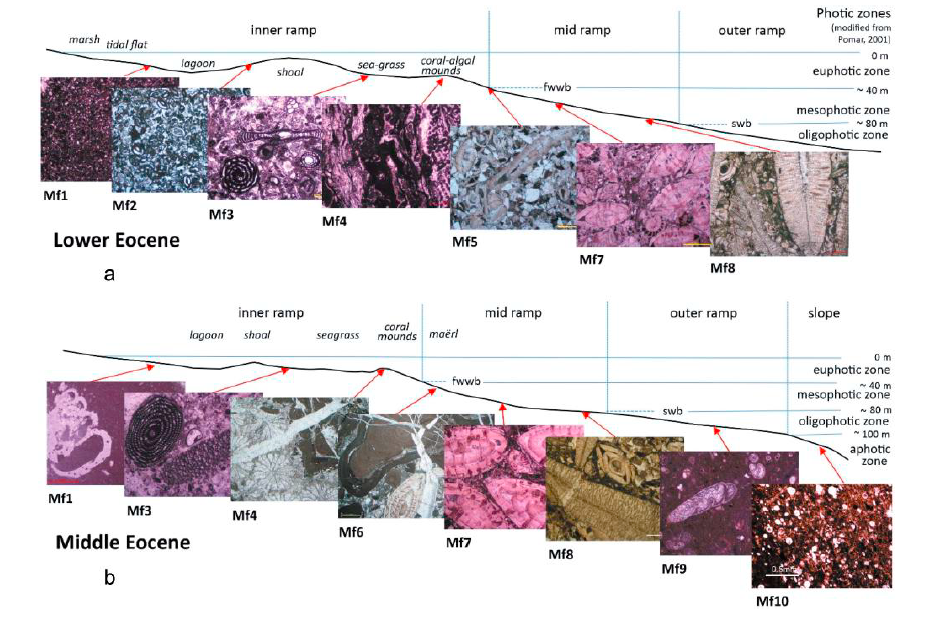
Environmental microfacies distribution for the Eocene marine Malaguide−Ghomaride Domains (modified from Maaté et al. 2000; Martín-Martín et al. 2020, 2021, 2023c; Tosquella et al. 2022). Ramp subdivision is based on Burchette and Wright (1992), while photic zones are modified from Pomar (2001); the new considered ‘mesophotic zone’ (zonation by Hottinger 1997) lies between the lower limit of occurrence of marine vegetation and the last occurrence of Larger Benthic Foraminifera, approximately coinciding with the storm wave base (swb). Key: Mf1, inner ramp lagoon, upper subtidal environment; Mf2, shoal, upper subtidal environment; Mf3, inner ramp seagrass, euphotic upper subtidal environment; Mf4, inner ramp coral-foralgal and acervulinid mounds, euphotic environment; Mf5, transgressive lag deposits in the transition between inner-to-mid ramp, euphotic to mesophotic environment; Mf6, mid ramp foralgal packstone–rudstone, mesophotic ma.rl environment; Mf7, proximal mid ramp LBF accumulations (nummulitids) in a mesophotic environment; Mf8, distal mid ramp LBF accumulations (orthophragminids) in a mesophotic to oligophotic environment; Mf9, outer ramp, oligophotic environment; Mf10, aphotic slope environment.
The Eocene platforms of the westernmost Tethys show a lacunose geological record registered from upper Ypresian (Cuisian) to Bartonian. It shows an important gap at the upper Ypresian (Cuisian)−Lutetian boundary. LBF remained the primary framework builders elsewhere until the Bartonian age, with zooxanthelle−coral build-ups playing a more significant role in the inner ramps than previously assumed.
Cite as: Martín-Martín, M., Tosquella, J., Guerrera, F., Maaté, A., and Martín-Algarra, A. (2024). The Eocene carbonate platforms of the westernmost Tethys: a review. International Geology Review, 1-33. https://doi.org/10.1080/00206814.2024.2397804
New biostratigraphic data on the Paleocene-Eocene from the Prebetic
A biostratigraphic study of the Paleocene-Eocene of the stratigraphically continuous with the northern foreland (Iberian Meseta), Prebetic has been studied by using planktonic foraminifera, calcareous nannoplankton, and larger benthic foraminifera. Twelve sections have been studied along the chain: four sections in the Alicante Sector, four in the Murcia Sector, two in the Granada Sector, and two sections in the Jaén Sector.
The Paleocene-Eocene Prebetic succession can be divided into three stratigraphic formations related by lateral and diachronic changes of facies: limestones and calcarenites (rich in larger benthic foraminifera) in middle stratigraphic position, and two marly-clayey formations in lower and upper positions, respectively. The middle unit represents an internal marine platform, while the two marly-clayey represent the external platform (and the upper slope in a few cases). As a whole, above the unconformity, representing the missing interval which includes the Cretaceous-Paleocene boundary.
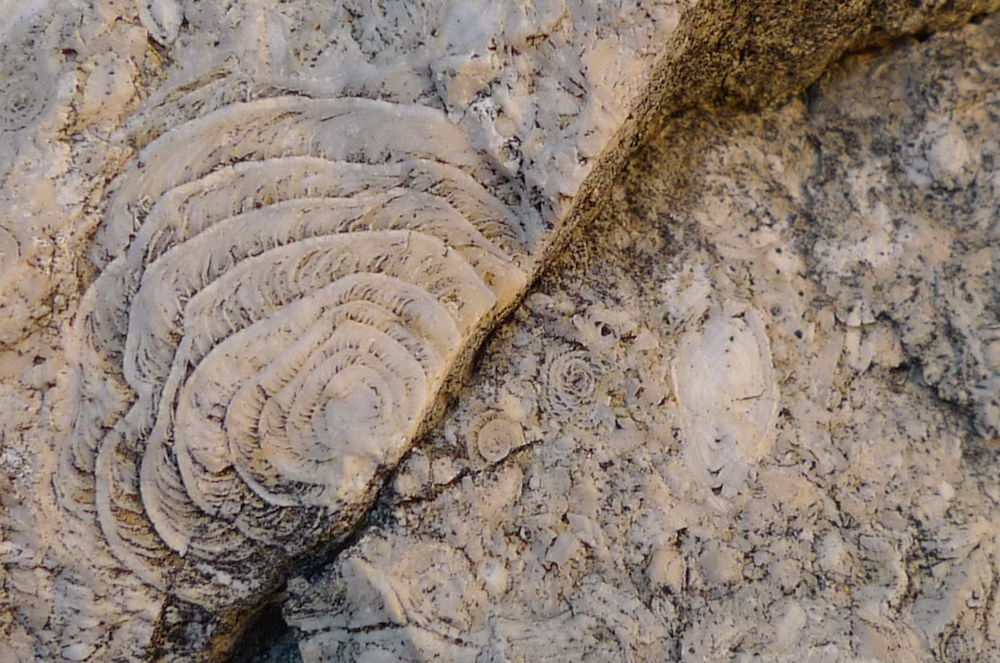
Cite as: Martín-Martín, M., Miclăuș, C., Serrano, F., Tosquella, J., Samsó, J.M., Tent-Manclús, J.E., and Martín-Pérez, J.A. (2023): New biostratigraphic data on the Paleocene-Eocene succession from the Prebetic domain (Betic Cordillera: South Spain).Abstract Book, Fourteenth Romanian Symposium on Palaeontology, Bucharest, 14-15 September 2023 / Zoltán Csiki-Sava, Alina Floroiu, Maria-Raluca Văcărescu, Iuliana Lazăr – Bucureşti : Editura Universităţii din Bucureşti -Bucharest University Press, 2023, 79-80 p.
Eocene carbonate platform of the Malaguides of the westermost Tethys
The Eocene Peñicas (Almería) and Harania (Málaga) stratigraphic sections from the Malaguide Complex (Betic Cordillera, South Spain) belonging to the Mesomediterranean Microplate from the westernmost Tethys (about 35◦N) have been studied. The Eocene sections cover the Cuisian to middle Lutetian deposits, which show several lithofacies representing shallow marine platform realms. Based on the fossiliferous assemblage, texture and fabrics, eight microfacies related to inner to outer ramp settings were defined. In the inner ramp of the Harania section abundant colonial corals have been recognized. The Eocene deposits are arranged into a transgressive succession composed by three minor transgressive-regressive sedimentary cycles. The Eocene fossiliferous assemblage shows a mixture of photozoan (Larger Bentic Foraminifera, green and red calcareous algae and corals) and heterotrophic (mollusks, echinoids, bryozoans, small benthic and planktic foraminifers) elements, suggesting euphotic to mesophotic conditions in oligo-mesotrophic marine warm-waters at low-middle latitudes. This assemblage indicates a transition from photozoan to heterozoan carbonates and in particular a shift towards outer marine ramp settings.
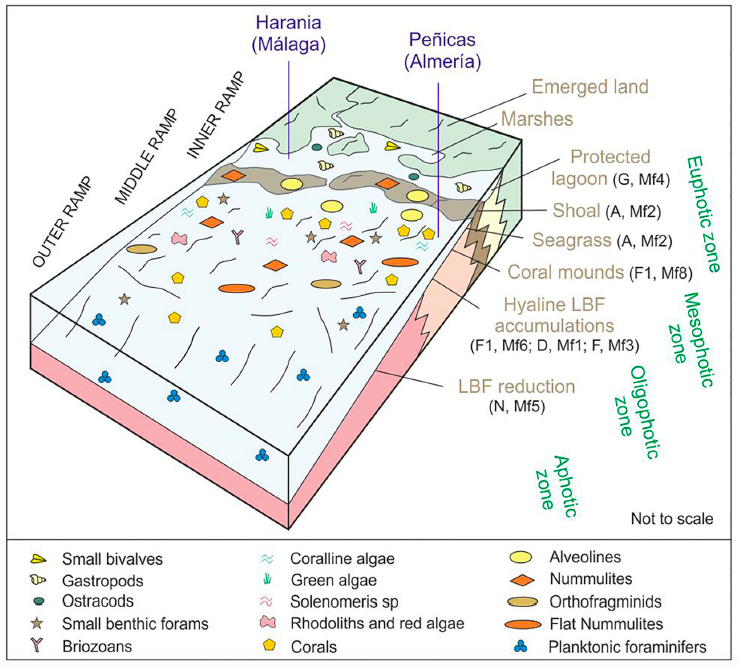
During the Early Eocene, the widespread distribution of Larger Benthic Foraminifera leads in the Tethyan domains to disappearance or extreme reduction of coral constructions. Nevertheless, abundant corals associated to inner ramp realms have been observed in the Harania stratigraphic section indicating that corals could continue to develop in the westernmost Tethys at the transition to the Atlantic Ocean, in contrast with respect to other Tethyan sectors. Therefore, the Ypresian-Lutetian time-span is a transitional period for the global temperature during which corals locally survived only where optimal ecologic conditions occurred, preferably in marginal contexts, as it seems to have happened in the studied area.
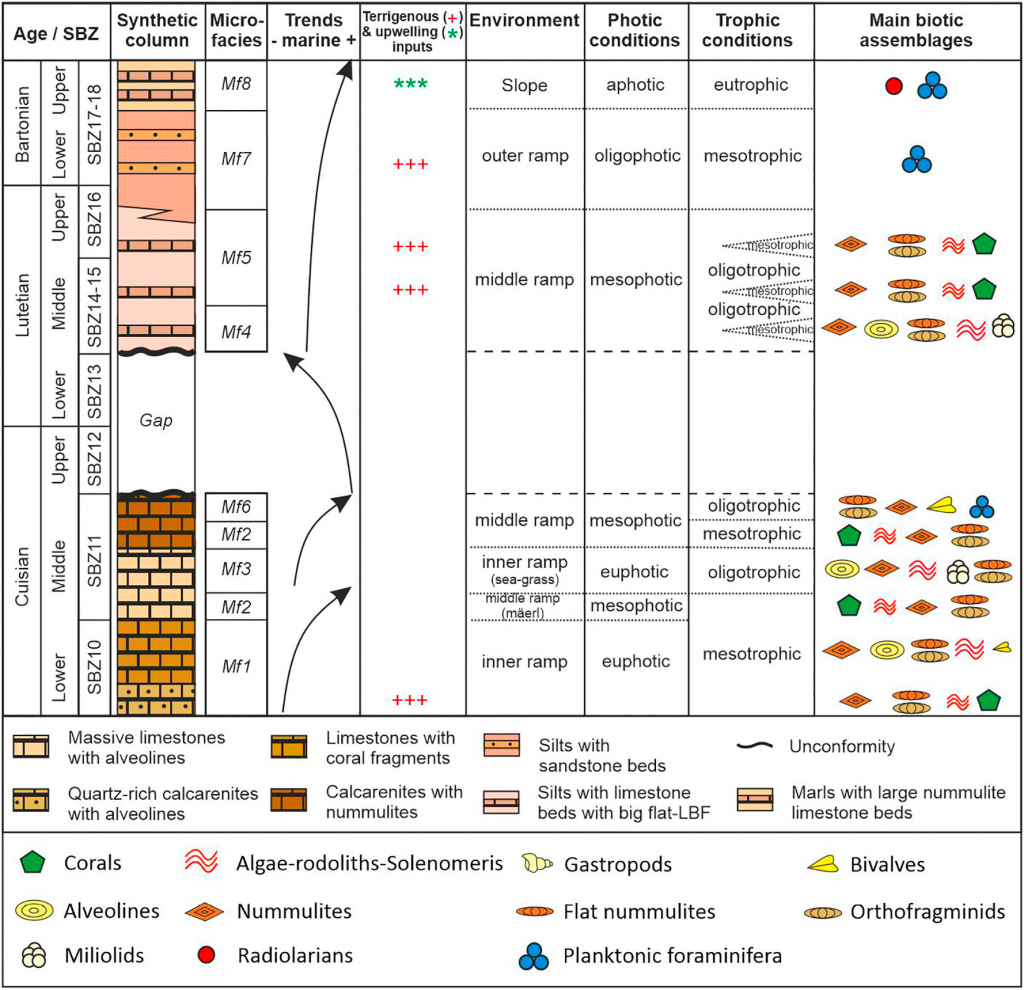
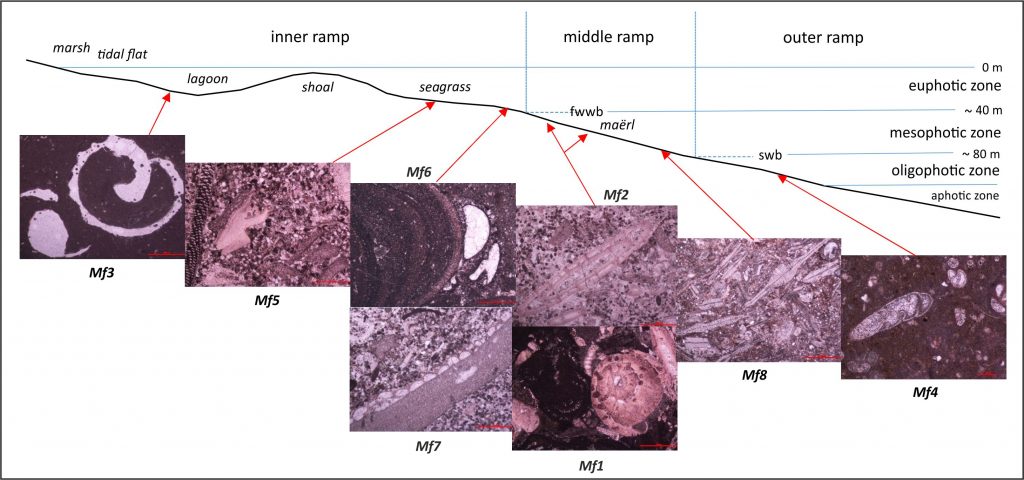
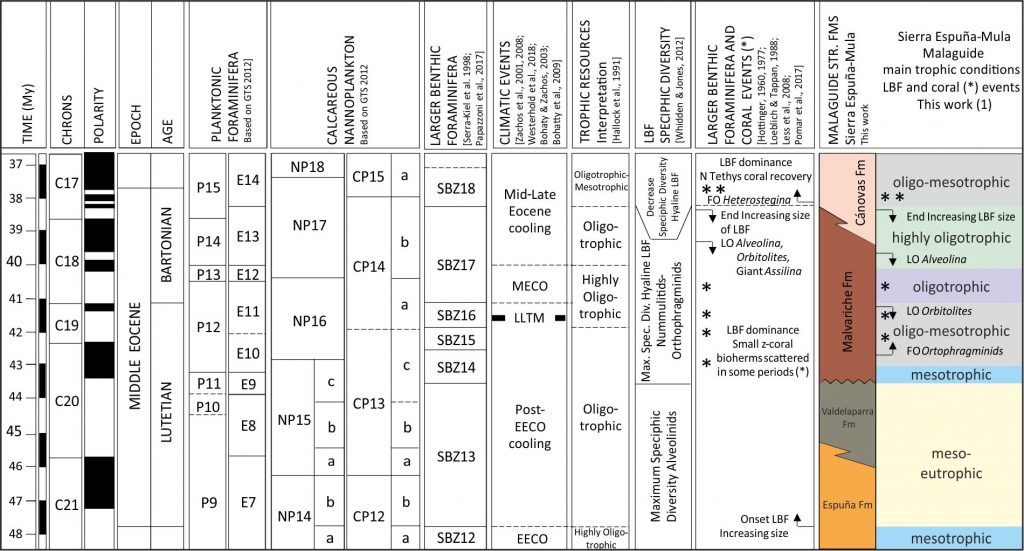
Recent Comments